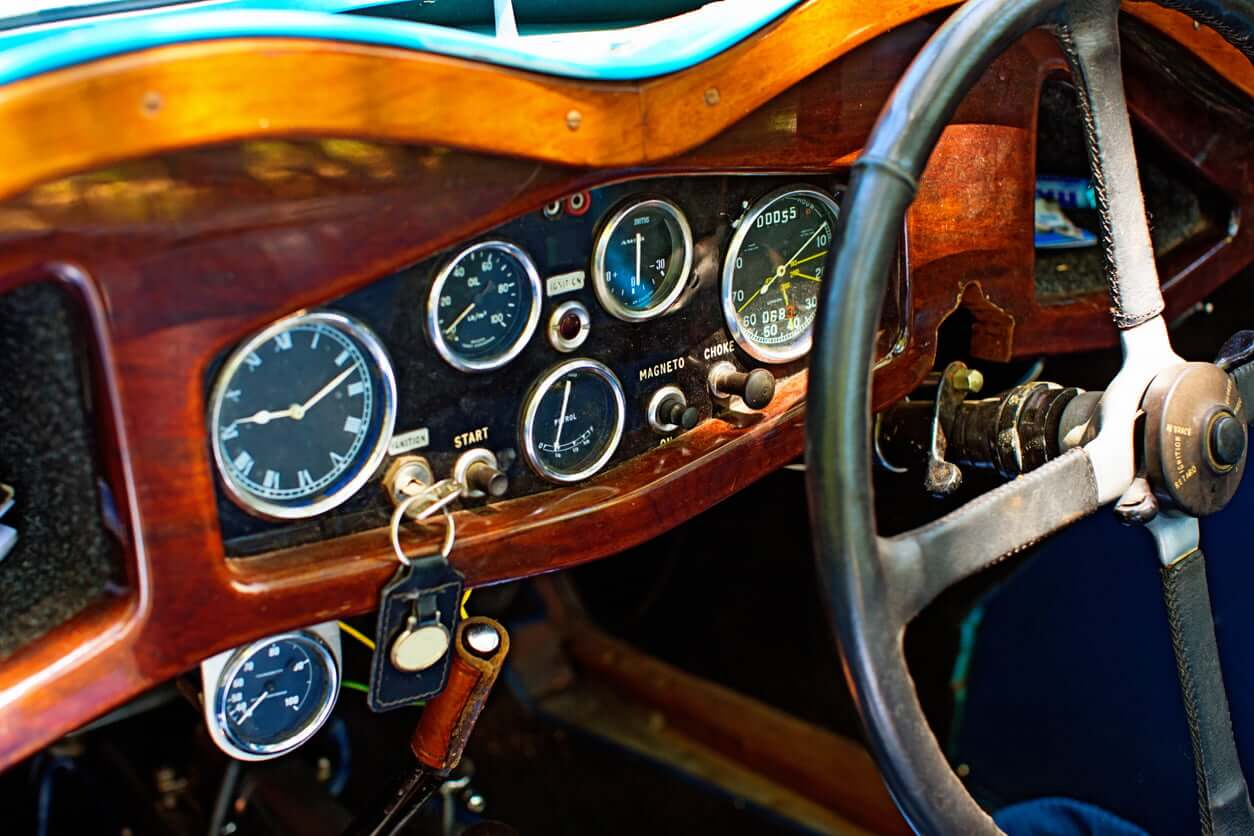Taking care of a classic car isn’t the same as taking care of new cars like the 1966 Mustang GT 2+2 Fastback from Revology. Due to the condition and age of the different components found in old cars, classic cars need a lot of love and care to preserve their vintage appeal and avoid damage by corrosion of their original parts. But then, as every classic owner understands, maintaining a classic car is part of the joys and perks of owning one.
If you just got yourself a new classic car, getting to grips with the maintenance and upkeep required to protect your car is among the biggest challenges you may face. Don’t worry; this guide has excellent tips on how to maintain your classic car, and how to store it to keep it from being affected and destroyed by the elements.
Looking after your classic car during winter
Classic cars are more prone to rust, so avoid driving them during winter and autumn. Low temperatures, snow, and rain aren’t good for an old car. It’s best to store your classic car where it’s protected from the elements. You’ll learn how to store your classic car later in the guide. Here are tips to prepare your classic car for winter storage.
1. Washing and polishing
Washing and polishing your classic car will benefit the car in two ways. First, it will keep the car clean, and second, the polish will add a protective layer to the paintwork. Use a car shampoo to ensure that all the filth is removed, so that you can polish the car without scratching it. Things like tree resin or bird droppings will bite into your classic car paint, so it’s best to ensure it’s thoroughly clean before storing it.
2. Aluminum and chrome
Aluminum and chrome parts such as door handles, bumpers, and wheels can oxidize. Treat the chrome with acid-free Vaseline or with a water-resistant silicone spray to give it a protective layer. Ensure you do this with aluminum wheels as well if your classic car has them. Despite any protective paint layer, even the smallest scratches can easily ruin and erode your wheels.
3. Tires, wheel arches, and undercarriages
You wouldn’t want to pick your car from storage with shaky tires, so ensure that you pump the tires once in a while in storage. Another option to ensure they don’t lose air while in storage is to put your classic car on axle stands.
Ensure that you clean the wheels and undercarriages, too. Spray sand and dirt away with a regular nozzle. Avoid using a high-pressure hose because the high pressure will affect the protective layer, and the water can easily penetrate the steering joints and the wheel bearings.
After washing your car, ensure that it’s completely dry. You can drive the car to dry it up completely. Ensure you take your time on the road because a fifty-kilometer trip will ensure that the exhaust and engine are up to temperature, leaving no room for moisture. Moreover, it will leave the battery fully charged.
4. Cooling system
The cooling fluid in your classic car offers protection of up to temperatures of around -25 degrees Celsius. The cleaning and preservation abilities of the fluid will decrease with use. Therefore, it’s recommended to change the coolant every two years. Change it before storing your classic car for winter to ensure that it will be protected once the low temperatures hit.
5. Fuel tank
All metals exposed to air can rust, and the fuel tank is no exception. Ensure that you fill up your classic car before storing it to protect your fuel tank from rusting.
6. Engine
The engine oil needs to be changed once a year to ensure good lubrication. It’s also highly recommended that you replace your engine oil before storing your classic car for the winter. You can do it after that last drive of the warm season to ensure that the oil is warm enough to change.
It’s also advisable to remove the car’s battery before storage, although disconnecting the battery is okay. Ensure that you also charge the battery during winter when the car is in storage. You can even be stepping on the brake and clutch pedals now and then to keep them flexible and avoid sticking. Make sure you don’t use the handbrake; instead, put it in gear. If you use the handbrake, the brake pads will rust on the brake disc.
Preparing your car for a new season
As the weather gets warmer, it’s time to prepare your car for a new season of driving. Below we listed some of the things which you should do to prepare your classic car for spring and summer driving after prolonged storage during winter.
1. Service it.
You should take your classic car for a thorough service before spring. From brake pads, engine oil, to tire pressures, ensure everything has been checked. This will assure you that everything is working well before you take it out for a drive.
2. Wax it.
Before heading out, ensure you wash your classic car thoroughly, polish, and wax it to protect the paintwork from the elements. It’s recommended for a classic car to reapply wax every few months to guarantee complete protection from dirt, grime, and the weather.
3. Clean your classic car.
After every drive, ensure that you hose down the car’s undercarriage where road dirt and salt can cause corrosion to untreated metal surfaces.
4. Recharge the battery.
Classic car batteries may lose power in cold temperatures or when they haven’t been in use for a while. Using a 12V charger, you can charge the battery manually before going out to avoid the car from stalling.
Storing your classic car
After driving and enjoying your car during summer, it’s time to put it in storage during the winter months. This is a crucial part of maintaining your classic car to ensure you protect your car from corrosion. Any damage to the car will affect its look, performance, and even value.
Here’s how to store your car during winter and some tips on maintaining it while in storage, so that’s it’s ready when the weather gets warmer.
Brick garage
A brick garage offers the best protection for your classic car, whether it’s a stand-alone unit or it’s attached to your house. Bricks do a great job maintaining moisture-free and a stable temperature environment suitable to keep your car safe from corrosion. It’s important to note that:
- If you have a gap under your garage door, consider covering up your classic car to protect it from the weather.
- Keep on checking your garage temperature to ensure that it doesn’t get too low in the winter or too hot in the summer.
- Open the car windows slightly, so that air can circulate inside it.
- Also, ensure that you get new locks or upgrade the locks on your garage door. Standard garage door locks are easy to break, so consider adding a padlock to make it more secure.
Wooden unit or pre-cast concrete
You can also store your classic car in a wooden unit or a pre-cast concrete unit, which you build specifically for storing your car. It’s a quicker option if you lack enough space, budget, or time to make a brick garage and protect your classic car from the elements.
Alternatively, you can use an outbuilding or a barn to store your classic car, but ensure the car is covered to prevent animals or damp from destroying it. You can also make a pop-up structure like a gazebo, which is easy to make and can keep your car sheltered.
However, you should know that concrete compounds lack breathability. Air doesn’t flow easily, so it’s easy for mold and mildew to form. To ensure that mold and mildew don’t develop, you should buy a couple of fans and use them every couple of weeks to circulate air in the unit.
Outdoors
If you don’t have a garage or space to get a unit to store your classic car and the only option is storing it outside, then there are a few things you can do to protect the car. You can purchase a cover, which is specifically built for your type of car. This will offer maximum protection and a close fit to prevent ‘wind rub.’ If you can’t find a cover built in the exact specifications as your classic car, buy one that’s a bit bigger than your car, then peg it into place to ensure everything is covered. If possible, lift the car off the ground to protect the wheels, tires, and undercarriage from rain and moisture.
However, don’t use a standard tarpaulin to cover your classic car; use only a standard built car cover. Tarpaulin and other typical plastic sheets don’t offer sufficient protection and won’t let the car breathe, which will cause condensation, mold, and mildew.
Follow this simple guide to ensure your classic car maintains its perfect form.




